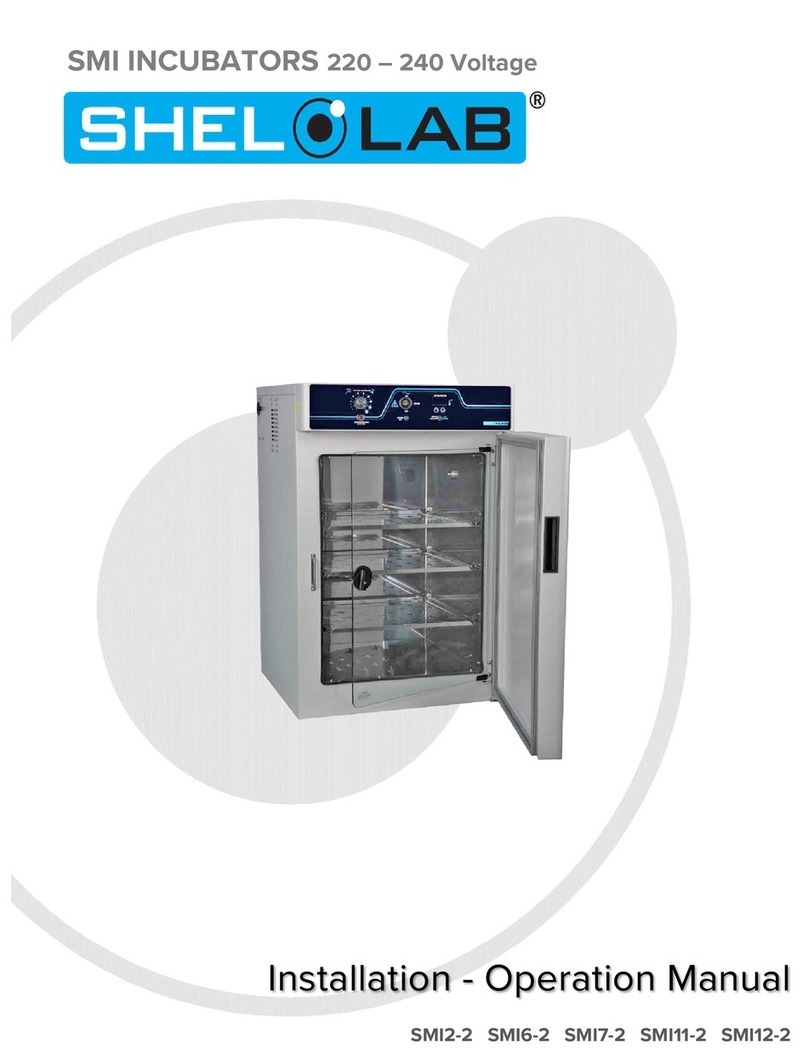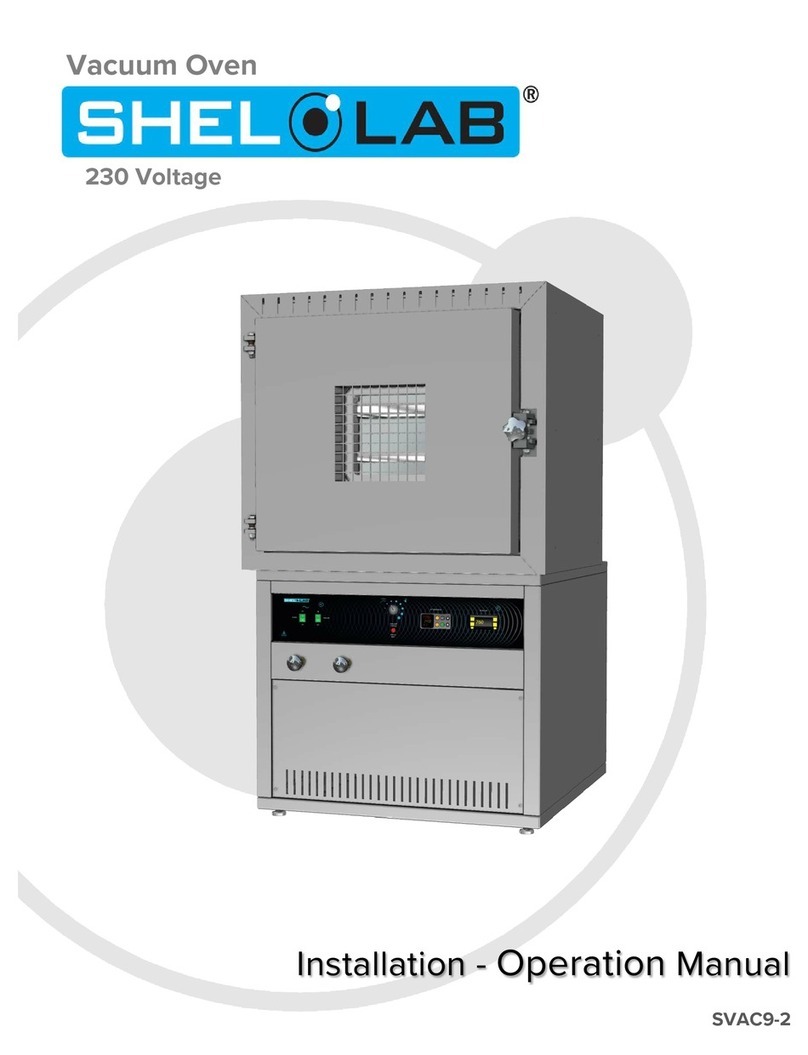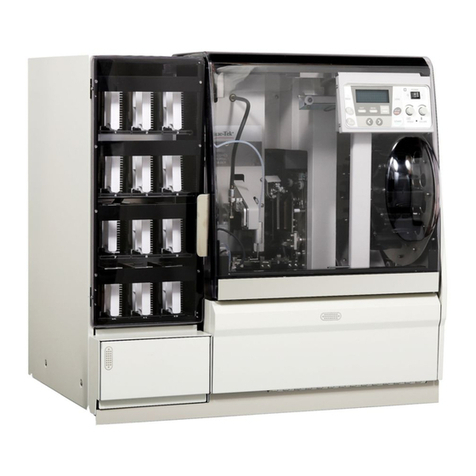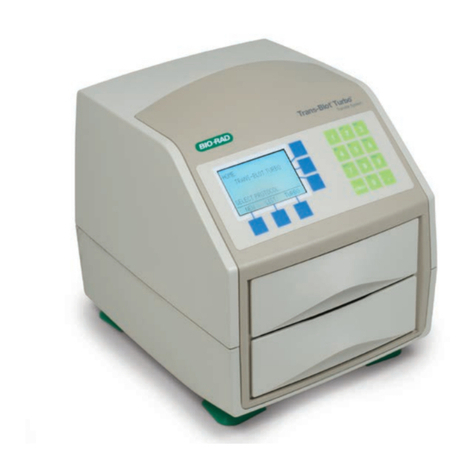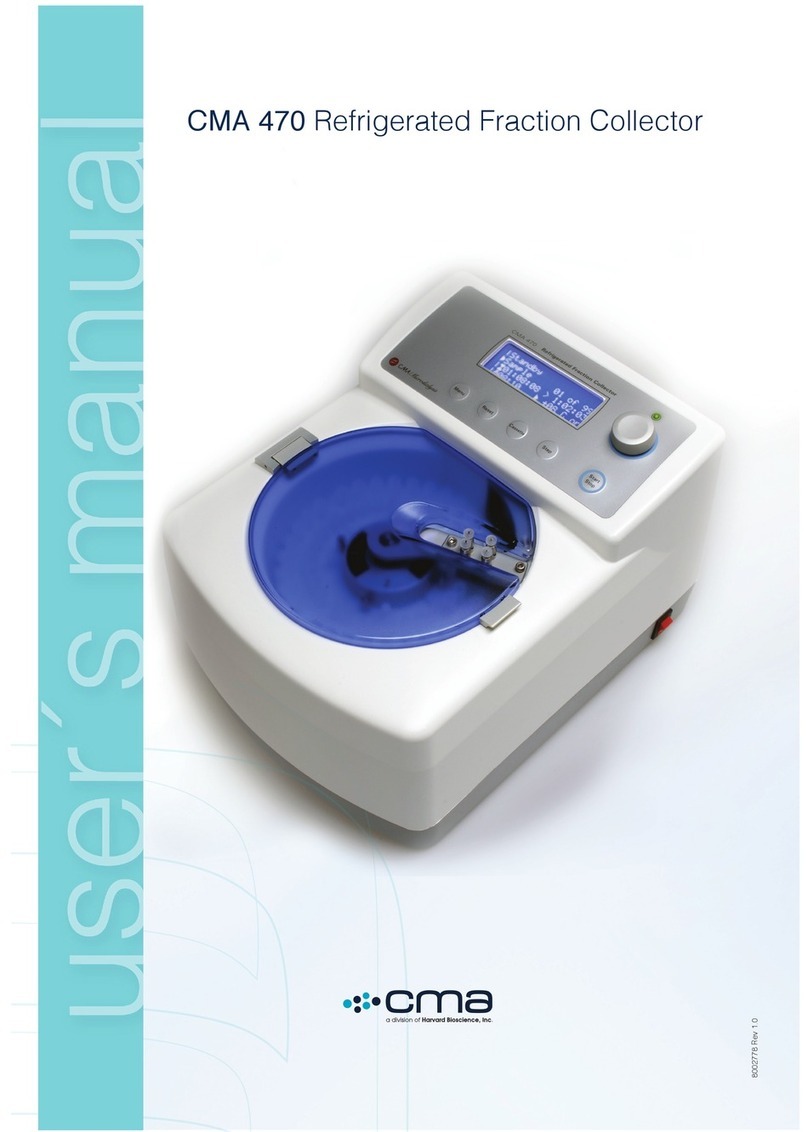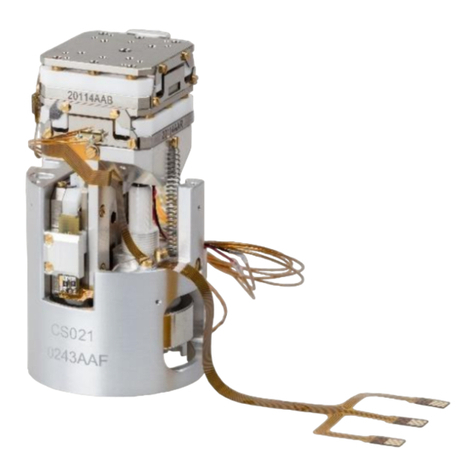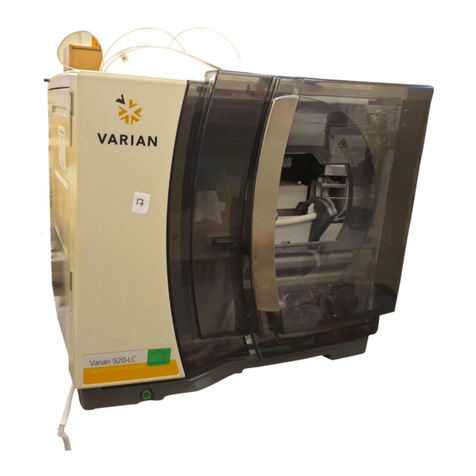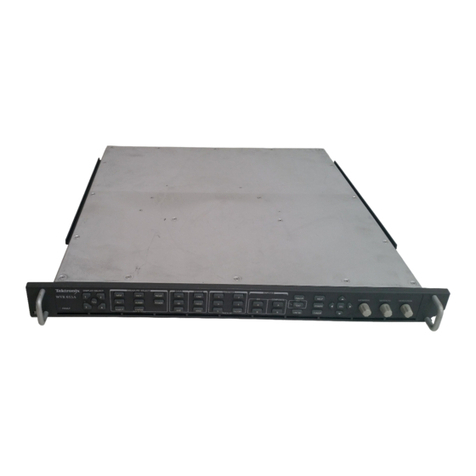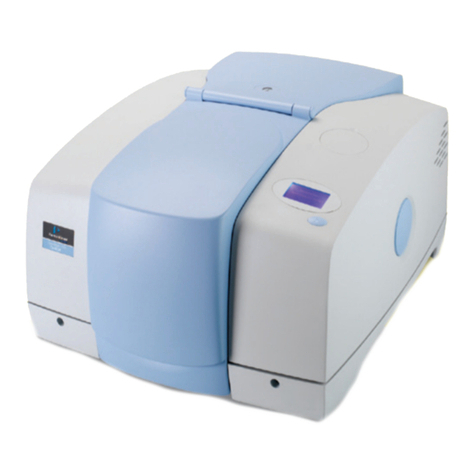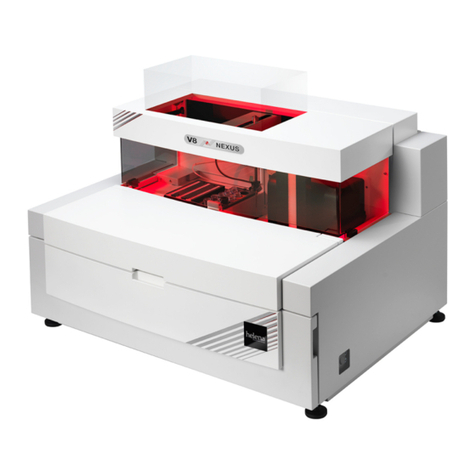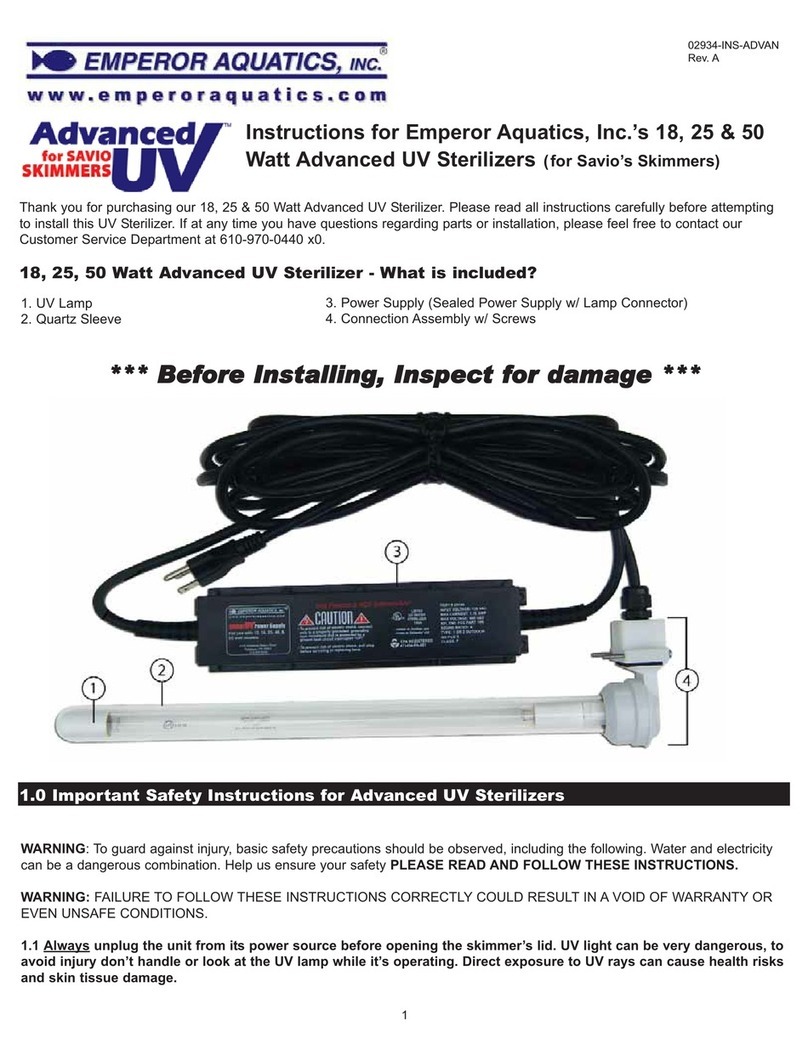Shel lab SRI3 User manual

BOD INCUBATOR
110 – 120 Voltage / 220 – 240 Voltage
Installation - Operation Manual
SRI3 SRI3-2

2| Page
WARNING: Never use this unit for the growth, cultivation, incubation or storage of fruit flies
(drosophila melanogaster). This unit is not designed for use with fruit flies. Improper use of this
unit, including use with fruit flies, will void any warranty. Other units are specifically manufactured
for fruit fly applications, and you should consult your dealer or the manufacturer in order to
identify another model suitable for your application.

3| Page
BOD INCUBATOR
SRI3 110 – 120 Voltage
SRI3-2 220 – 240 Voltage
Part Number (Manual): 4861574
Revision: February 12, 2018
These units are compliant with the following standards for use within an ambient air pressure range
of 22.14 – 31.3 inHg (75 – 106 kPa), with no flammable, volatile, or combustible materials being
heated.
CAN/CSA C22.2 No. 61010-1:2012
CAN/CSA C22.2 No. 61010-2-010:2004 Reaffirmed: 2014-07
UL 61010-1:2012-05
UL 61010A-2-010:2002-03
EN 61010-1:2010
EN 61010-2-010:2014
Supplemented by: UL 61010-2-010:2015

4| Page
TABLE OF CONTENTS
INTRODUCTION ........................................................................................................................................................ 5
Read this Manual....................................................................................................................................................................5
Safety Considerations and Requirements ......................................................................................................................5
Contacting Assistance ..........................................................................................................................................................6
Engineering Improvements..................................................................................................................................................6
Reference Sensor Device .................................................................................................................................................... 7
RECEIVING YOUR UNIT ........................................................................................................................................... 9
Inspect the Shipment.............................................................................................................................................................9
Orientation Photo ................................................................................................................................................................. 10
Recording Data Plate Information.................................................................................................................................... 11
INSTALLATION .........................................................................................................................................................13
Installation Checklist ........................................................................................................................................................... 13
Required Ambient Conditions........................................................................................................................................... 14
Required Clearances........................................................................................................................................................... 14
Power Source Requirements ............................................................................................................................................ 15
Lifting and Handling ............................................................................................................................................................ 16
Leveling................................................................................................................................................................................... 16
Install Incubator in Location .............................................................................................................................................. 16
Adjust Shelves........................................................................................................................................................................17
Deionized and Distilled Water.......................................................................................................................................... 18
Installation Cleaning and Disinfection ........................................................................................................................... 18
GRAPHIC SYMBOLS ................................................................................................................................................19
CONTROL PANEL OVERVIEW ...............................................................................................................................21
OPERATION.............................................................................................................................................................. 23
Theory of Operation ........................................................................................................................................................... 23
Put the Incubator into Operation .................................................................................................................................... 24
Set the Temperature Set Point........................................................................................................................................ 25
Set the Over Temperature Limit...................................................................................................................................... 26
Loading Samples..................................................................................................................................................................27
Accessory Compatibility and Power Outlet ..................................................................................................................27
Condensation and the Dew Point .................................................................................................................................. 28
USER MAINTENANCE............................................................................................................................................. 29
Cleaning and Disinfecting................................................................................................................................................. 29
Minimizing Contamination Exposure ............................................................................................................................. 30
Electrical Components....................................................................................................................................................... 30
Refrigeration and Defrosting............................................................................................................................................. 31
Calibrate the Temperature display ................................................................................................................................ 34
UNIT SPECIFICATIONS .......................................................................................................................................... 39
Weight..................................................................................................................................................................................... 39
Dimensions............................................................................................................................................................................ 39
Capacity ................................................................................................................................................................................. 39
Shelf Capacity by Weight.................................................................................................................................................. 40
Temperature ......................................................................................................................................................................... 40
Power...................................................................................................................................................................................... 40
PARTS LIST................................................................................................................................................................41

5| Page
INTRODUCTION
Thank you for purchasing a SHEL LAB product. We know you have many choices in today’s competitive
marketplace when it comes to constant temperature equipment. We appreciate you choosing ours. We
stand behind our products and will be here for you if you need us.
READ THIS MANUAL
Failure to follow the guidelines and instructions in this user manual may create a protection
impairment by disabling or interfering with the unit safety features. This can result in injury or death.
Before using the unit, read the manual in its entirety to understand how to install, operate, and
maintain the unit in a safe manner. Keep this manual available for use by all operators. Ensure all
operators are given appropriate training before the unit begins service.
SAFETY CONSIDERATIONS AND REQUIREMENTS
Follow basic safety precautions, including all national laws, regulations, and local ordinances in your
area regarding the use of this unit. If you have any questions about local requirements, please
contact the appropriate agencies.
SOPs
Because of the range of potential applications this unit can be used for, the operator or their
supervisors must draw up a site-specific standard operating procedure (SOP) covering each
application and associated safety guidelines. This SOP must be written and available to all operators
in a language they understand.
Intended Applications and Locations
These incubators are intended for professional, industrial, or educational BOD applications at a
constant temperature. The incubators are not designed for use in hazardous or household locations.
Power
Your unit and its recommended accessories are designed and tested to meet strict safety
requirements.
•The unit is designed to connect to a power source using the specific power cord type
shipped with the unit.
•Always plug the unit power cord into a protective earth grounded electrical outlet
conforming to national and local electrical codes. If the unit is not grounded properly, parts
such as knobs and controls can conduct electricity and cause serious injury.
•Do not bend the power cord excessively, step on it, or place heavy objects on it.
•A damaged cord can be a shock or fire hazard. Never use a power cord if it is damaged or
altered in any way.
•Use only approved accessories. Do not modify system components. Any alterations or
modifications to your unit not explicitly authorized by the manufacturer can be dangerous
and will void your warranty.

6| Page
INTRODUCTION
CONTACTING ASSISTANCE
Phone hours for Sheldon Technical Support are 6 am – 4:30 pm Pacific Coast Time (west coast of
the United States, UTC -8), Monday through Friday. Please have the following information ready
when calling or emailing Technical Support: the model number and the serial number (see page 11).
EMAIL: [email protected]
PHONE: 1-800-322-4897 extension 4, or (503) 640-3000
FAX: (503) 640-1366
Sheldon Manufacturing, INC.
P.O. Box 627
Cornelius, OR 97113
ENGINEERING IMPROVEMENTS
Sheldon Manufacturing continually improves all of its products. As a result, engineering changes and
improvements are made from time to time. Therefore, some changes, modifications, and
improvements may not be covered in this manual. If your unit’s operating characteristics or
appearance differs from those described in this manual, please contact your SHEL LAB dealer or
customer service representative for assistance.

7| Page
INTRODUCTION
REFERENCE SENSOR DEVICE
Optional
Must be purchased separately
A reference sensor device is required for calibrating the unit temperature display.
Reference devices must meet the following standards:
•Accurate to at least 0.1°C
The device should be regularly calibrated, preferably by a third party.
Temperature Probe
Use a digital device with a wire thermocouple probe that can be introduced into the unit chamber
through the door space. Select thermocouples suitable for the application temperature you will be
calibrating at.
Why Probes?
Reference readings taken outside the chamber using wire temperature probes avoid chamber door
openings. Openings disrupt the chamber temperature. Each disruption requires a minimum 1-hour wait
to allow the atmosphere to re-stabilize before continuing.
No Alcohol or Mercury Thermometers
Alcohol thermometers do not have sufficient accuracy to conduct accurate temperature calibrations.
Never place a mercury thermometer in the unit chamber. Always use thermocouple probes.
Temperature
Reference

8| Page
INTRODUCTION

9| Page
RECEIVING YOUR UNIT
INSPECT THE SHIPMENT
•When a unit leaves the factory, safe delivery becomes the responsibility of the carrier.
•Damage sustained during transit is not covered by the manufacturing defect warranty.
•Save the shipping carton until you are certain that the unit and its accessories function
properly.
When you receive your unit, inspect it for concealed loss or damage to its interior and exterior. If you
find any damage to the unit, follow the carrier’s procedure for claiming damage or loss.
1. Carefully inspect the shipping carton for damage.
2. Report any damage to the carrier service that delivered the unit.
3. If the carton is not damaged, open the carton and remove the contents.
4. Inspect the unit for signs of damage. See the orientation depiction on the next page as a
reference.
5. The unit should come with an Installation and Operation Manual.
6. Verify that the correct number of accessory items has been included.
7. Carefully check all packaging for accessory items before discarding.

10 | Page
Figure
1: SRI3/SRI3-2
RECEIVING YOUR UNIT
ORIENTATION PHOTO
Control Panel
Temperature Probe
Wire Shelf, 1 of 2
Chamber Door
Incubation
Chamber
Door Gasket

11 | Page
RECEIVING YOUR UNIT
RECORDING DATA PLATE INFORMATION
The data plate contains the unit model number and serial number. Tech Support will need this
information during any support call. Record it below for future reference.
•The data plate is located near the power cord on the back of the unit.
Model Number
Serial Number

12 | Page
RECEIVING YOUR UNIT

13 | Page
INSTALLATION
INSTALLATION CHECKLIST
For installing the unit in a new workspace location.
Pre-Installation
Check that the required ambient conditions and ventilation spacing for the incubator
are met, page 14.
•Unit dimensions may be found on page 39.
Check that a suitable electrical outlet and power supply is present, page 15.
Install the Incubator in a suitable location
Review the lifting and handling instructions, page 16.
Install the incubator in its workspace location, page 16.
Make sure the incubator is level, page 16.
Set up the Incubator for use
Verify that all packaging has been removed from the incubator shelving and
incubation chamber. Adjust the shelving positions if need be, page 17.
Clean and disinfect the incubator and shelving accessories that will be placed in
the incubation chamber, page 17.

14 | Page
INSTALLATION
REQUIRED AMBIENT CONDITIONS
When selecting a location to install the unit, consider all environmental conditions that can adversely
impact its temperature performance. These include:
•Proximity to ovens, autoclaves, and any device that produces significant radiant heat
•Heating and cooling vents or other sources of fast-moving air currents
•High-traffic areas
•Direct sunlight
These units are built for use indoors at room temperatures between 15°C and 30°C (59°F and 86°F), at
no greater than 80% Relative Humidity (at 25°C / 77°F). Operating outside these conditions may
adversely affect the unit temperature performance.
REQUIRED CLEARANCES
These clearances are required to provide air flows for ventilation and cooling.
4 inches (100 mm) of clearance is required on the sides and back.
2.5 inches (60 mm) of headspace clearance is required between the top of the unit and any
overhead partitions.
2.5” (60 mm)
4” (100 mm)
4” (100 mm)
Leave sufficient room in
front of the unit for the
door to swing freely.

15 | Page
INSTALLATION
POWER SOURCE REQUIREMENTS
When selecting a location for the unit, verify each of the following requirements is satisfied.
Power Source
The power source for the unit must match the voltage and the amperage requirements listed on the
unit data plate. These units are intended for 110 - 120V 50/60 Hz (SRI3) or 220 – 240V 50/60 Hz
(SRI3-2) applications at the following amperages:
SRI3 SRI3-2
5.0 Amps 3.5 Amps
•Supplied voltage must not vary more than 10% from the data plate rating. Damage to the
unit may result if the supplied voltage varies more than 10%.
•The wall power source must be protective earth grounded.
•Use a separate circuit to prevent loss of the unit due to overloading or circuit failure.
•The wall power source must conform to all national and local electrical codes.
Power Cord
The unit must be positioned so that all end-users can quickly unplug the power cord in the event of
an emergency.
•The SRI3 is provided with an integral 120V, 15 Amp, NEMA 5-15P, 8ft (2.5m) power cord.
•The SRI3-2 is provided with an integral 220V, 16 Amp, Euro CEE 7/7, 8ft (2.5m) power cord.
Circuit Breaker: The unit is provided with an integral circuit breaker to protect against overcurrent
conditions.
•Always determine the cause of an overcurrent event before resetting a tripped circuit
breaker.

16 | Page
INSTALLATION
LIFTING AND HANDLING
The unit is heavy. Use appropriate lifting devices that are sufficiently rated for these loads. Follow these
guidelines when lifting the unit.
•Lift the unit only from its bottom surface.
•Doors, handles, and knobs are not adequate for lifting or stabilization.
•Restrain the unit completely while lifting or transporting so it cannot tip.
•Remove all moving parts, such as shelves and trays, and lock doors in the closed position
during transfers to prevent shifting and damage.
LEVELING
The unit must be level and stable for safe operation.
INSTALL INCUBATOR IN LOCATION
Install the unit in a workspace location that meets the criteria discussed in the previous entries of the
Installation section.

17 | Page
INSTALLATION
ADJUST SHELVES
Note: The form factor of the shelves may vary slightly by year of production.
The unit ships with its shelves installed in the incubation chamber. Tape, foam, and other packing
dunnage is used to secure the shelves during transit and prevent damage to the chamber interior.
1. Remove all shipping materials from the shelving.
Optional: Shelf Adjustment
Move the shelves as needed for your application.
Figure 2: Shelf Installed
2. Install the right
side mounting
prongs first.
3. Install the left side
mounting prongs last.
1. Tilt the shelf at roughly
60° up or down when
moving to avoid
scraping the chamber
walls.

18 | Page
INSTALLATION
DEIONIZED AND DISTILLED WATER
Do not use deionized water to clean the chamber even if it is readily available in your laboratory
environment. Use of deionized water may corrode metal surfaces and voids the warranty. Sheldon
Manufacturing recommends the use of distilled water in the resistance range of 50K Ohm/cm to 1M
Ohm/cm, or a conductivity range of 20.0 uS/cm to 1.0 uS/cm, for cleaning applications.
INSTALLATION CLEANING AND DISINFECTION
The manufacturer recommends cleaning the shelving and unit chamber prior to installation of the
shelving in the chamber. The unit was cleaned at the factory but may have been exposed to
contaminants during shipping. Remove all wrappings and coverings from shelving prior to cleaning
and installation. Do not clean with deionized water.
Please see the Cleaning and Disinfection procedure on page 29 of the User Maintenance section
for information on how to clean and disinfect without damaging the unit and its components.

19 | Page
GRAPHIC SYMBOLS
Your incubator comes provided with graphic symbols on its exterior surfaces. These identify hazards
and the function of the adjustable components, as well as important notes in the user manual.
Symbol Definition
Consult the user manual.
Consulter le manuel d'utilisation
Temperature display
Indique l'affichage de la température
Over Temperature Limit system
Thermostat température limite contrôle haute
AC Power
Repère le courant alternatif
I/ON O/OFF
I indique que l'interrupteur est en position marche.
O indique que le commutateur est en position d'arrêt.
Protective earth ground
Terre électrique
Adjusts UP and DOWN
Ajuster le haut et vers le bas
Manually adjustable
Indique un réglage manuel
Potential shock hazard
Risque de choc électrique
Recycle the unit. Do not dispose of in a landfill.
Recycler l'unité. Ne jetez pas dans une décharge

20 | Page
GRAPHIC SYMBOLS
This manual suits for next models
1
Table of contents
Other Shel lab Laboratory Equipment manuals
Popular Laboratory Equipment manuals by other brands

Fluke Biomedical
Fluke Biomedical INCU Operator's manual
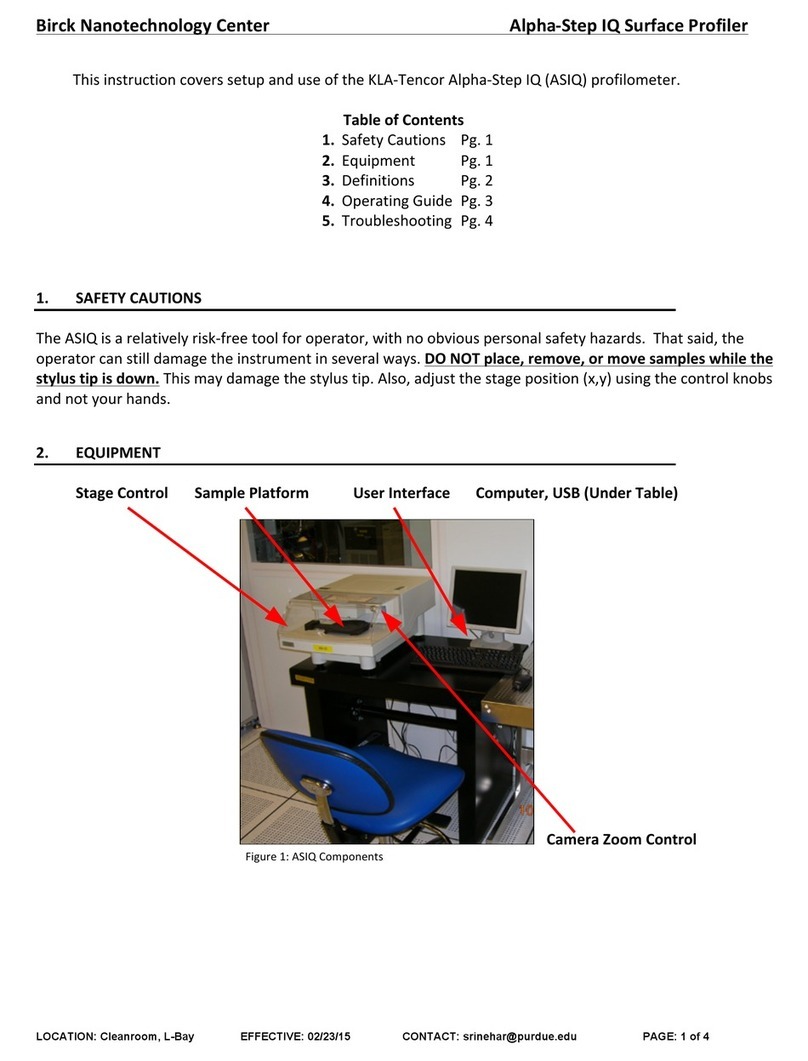
KLA Tencor
KLA Tencor Alpha-StepIQ operating guide

ASEG GALLONI
ASEG GALLONI MODULAR 6 Operating and maintenance manual

Laarmann
Laarmann LMFC250 user manual
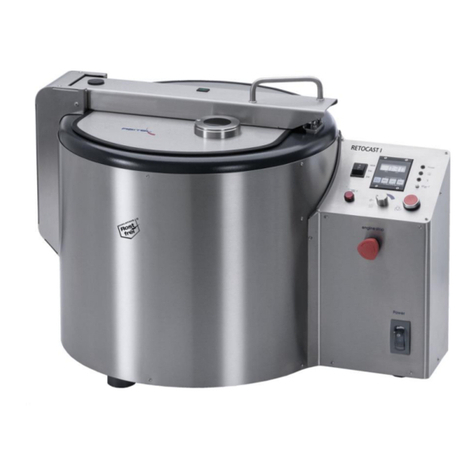
REITEL
REITEL RETOCAST I operating instructions
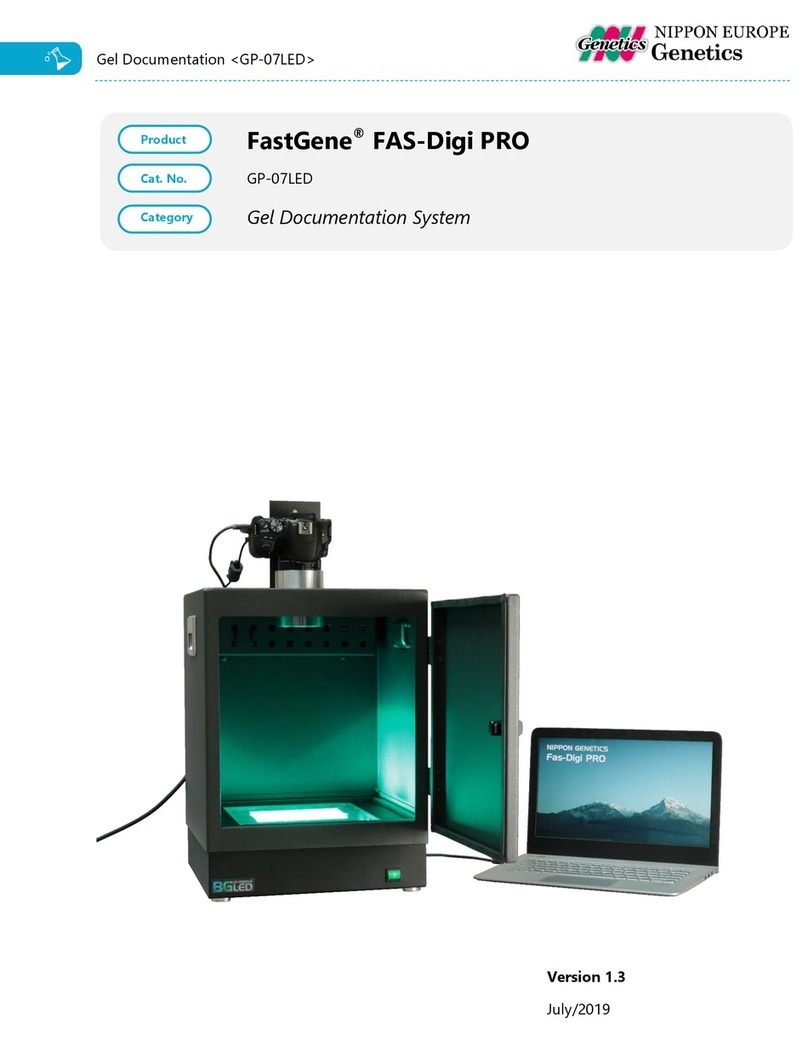
Nippon Genetics
Nippon Genetics FastGene FAS-Digi PRO manual
